Puning Temple: Experience the Peace and Beauty of Ancient Chinese Buddhism
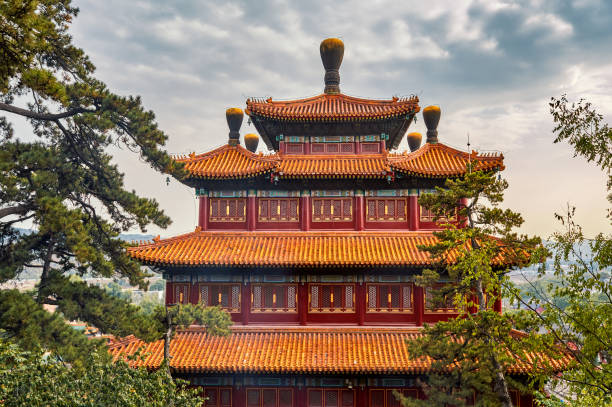
An Essential Guide to Visiting Puning Temple
In This Guide
- An Essential Guide to Visiting Puning Temple
- The Rich History and Legends of Puning Temple
- Main Highlights: What You Absolutely Can’t Miss
- Planning Your Visit: A Practical Guide
- Tickets: Prices, Booking, and Tips
- How to Get There: A Complete Transportation Guide
- Local Cuisine and Accommodation Nearby
- Frequently Asked Questions
- Final Thoughts on Your Trip
Nestled in the heart of Chengde, Hebei province, Puning Temple (普宁寺) stands as a beacon of tranquility and historical significance. Known as the Temple of Universal Peace, this exquisite Buddhist complex was constructed in 1755 during the Qing dynasty under the reign of the Qianlong Emperor. It serves as a monumental tribute to China’s rich cultural tapestry, intertwining Han Chinese architectural elements with the distinctive styles of Tibetan Buddhism.
As you approach the temple, the grandeur of its architecture becomes evident, with vibrant red walls contrasting against the serene greenery that envelops the grounds. But what truly captivates visitors is the awe-inspiring centerpiece: a towering 22-meter wooden statue of Guanyin, the Goddess of Mercy, renowned for her thousand arms and eyes, symbolizing compassion and the ability to see the suffering of the world. This remarkable statue is not only the tallest wooden Buddha in the world but also a testament to the artistry and dedication of the craftsmen who created it.

Puning Temple.
Visiting Puning Temple offers more than just a glimpse of its architectural beauty; it immerses you in a tranquil atmosphere, inviting reflection and peace amidst the hustle and bustle of Chengde. Whether you’re a history buff, a lover of art, or simply in search of a serene escape, the temple’s expansive grounds and spiritual ambiance promise a memorable experience.
Before you embark on your journey to this sacred site, take a moment to understand its significance and prepare for an encounter that transcends mere sightseeing—where history, spirituality, and artistry converge into one harmonious experience.
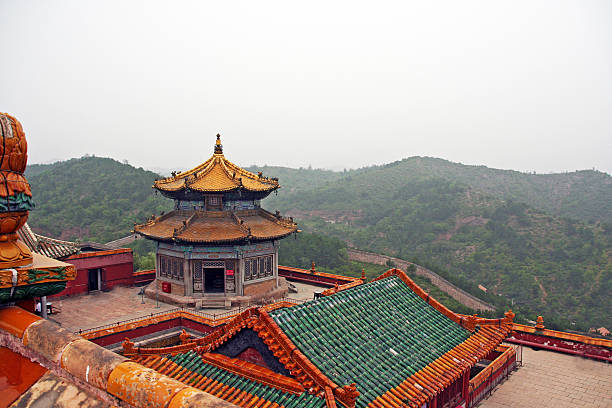
Puning Temple.
The Rich History and Legends of Puning Temple
Unveiling the Historical Tapestry of Puning Temple
Nestled in the serene surroundings of Chengde, Puning Temple, or the Temple of Universal Peace, stands as a remarkable testament to China’s rich Buddhist heritage. Constructed in 1755 during the reign of the Qianlong Emperor of the Qing dynasty, this temple serves not only as a religious sanctuary but also as a historical monument commemorating the Qing dynasty’s triumph over the Zonggar people.
A Symbol of Peace and Victory
Puning Temple was built following the Qing Empire’s military victories, particularly to honor the peace treaty with the Zonggar tribe. The temple’s establishment was part of a broader strategy by the Qianlong Emperor to solidify the empire’s control and to promote Buddhism as a unifying cultural force. The complex reflects the emperor’s desire for harmony among the diverse ethnic groups within his realm.
Architectural Marvels
One of the most striking features of Puning Temple is its grand architecture, which harmoniously blends Han Chinese and Tibetan styles. This fusion is evident in the intricate designs of the halls and the overall layout of the temple, creating a captivating visual narrative that tells the story of cultural coexistence. The centerpiece of the temple is the towering 22-meter wooden statue of Guanyin, also known as Avalokitesvara, the Bodhisattva of Compassion. This statue, renowned for its intricate craftsmanship, is a focal point for visitors and devotees alike.
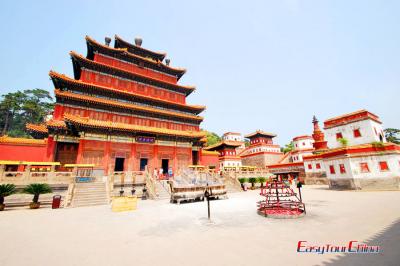
Puning Temple.
Legends and Spiritual Significance
Puning Temple is steeped in legends that add layers of intrigue to its historical narrative. One popular legend speaks of the Guanyin statue possessing miraculous powers, believed to grant wishes and provide solace to those who seek guidance. It is said that visitors who approach the statue with pure intentions will receive blessings in return. The temple’s tranquil atmosphere and its majestic surroundings enhance the spiritual experience, drawing both pilgrims and tourists to its sacred grounds.
Cultural Celebrations and Traditions
Throughout the year, Puning Temple becomes a vibrant hub for cultural and religious festivals, attracting participants from across the region. These events often include traditional Buddhist ceremonies, chanting, and offerings, creating a dynamic atmosphere where ancient customs come alive. Engaging in these celebrations can provide travelers with a unique opportunity to witness the living traditions of Chinese Buddhism.
The Modern-Day Sanctuary
Today, Puning Temple is the only active temple within Chengde, continuing to serve as a place of worship and reflection. Visitors are encouraged to respect local customs, including refraining from photography within the main temple hall, where the serene presence of Guanyin inspires reverence and contemplation. The expansive temple grounds invite exploration, allowing one to experience both the grandeur of the architecture and the peaceful ambiance that pervades the area.
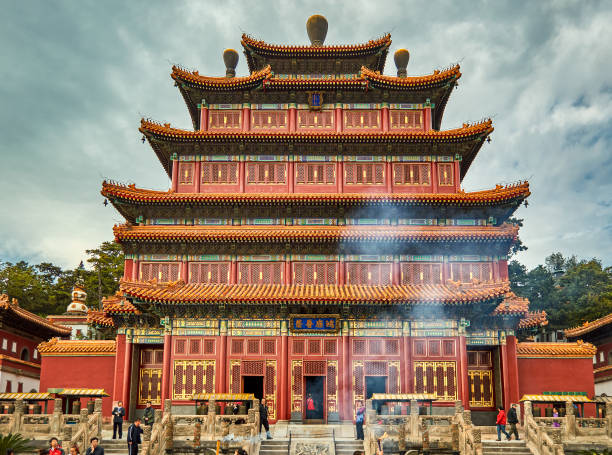
Puning Temple.
In conclusion, Puning Temple is not merely an architectural marvel but a vibrant historical site that encapsulates the essence of Chinese Buddhist culture. Its compelling history, combined with the legends that surround it, make it a must-visit destination for anyone seeking to delve into the rich tapestry of China’s spiritual heritage. Whether you are drawn by its artistic beauty, its historical significance, or its spiritual allure, Puning Temple promises an unforgettable journey into the heart of Chinese culture.
Main Highlights: What You Absolutely Can’t Miss
Discover the Wonders of Puning Temple
Nestled in the picturesque city of Chengde, Puning Temple, also known as the Temple of Universal Peace, is a treasure trove of Buddhist heritage and architectural splendor. Built in 1755 during the reign of the Qianlong Emperor, this temple not only commemorates a significant historical victory but also serves as a serene sanctuary for visitors seeking tranquility amidst the bustling surroundings. Here are the main highlights you absolutely can’t miss:
1. The Enormous Guanyin Statue
At the heart of Puning Temple stands the world’s tallest wooden statue of Guanyin, the Buddhist goddess of mercy, soaring over 22 meters. This awe-inspiring figure, adorned with intricate details depicting her thousand arms and eyes, captures the essence of compassion and enlightenment. Though photography is prohibited inside the main hall, the experience of standing in its presence is breathtaking and deeply resonant.
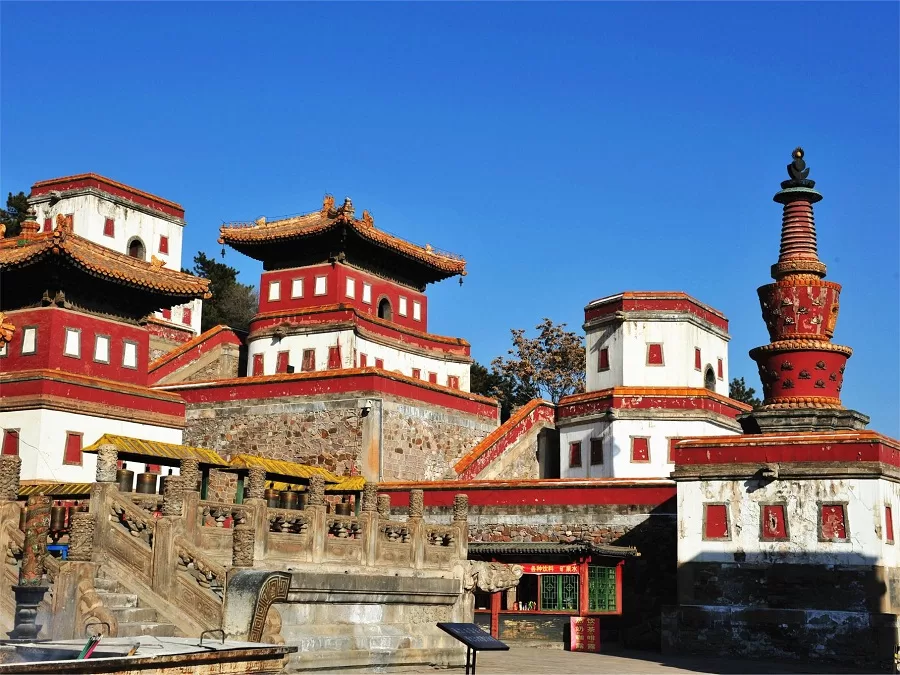
Puning Temple.
2. Architectural Marvels
Puning Temple is a fascinating blend of Han Chinese and Tibetan architectural styles, reflecting the cultural exchanges during the Qing dynasty. As you wander through the temple complex, you’ll notice the harmonious integration of dark red structures and white stone, adorned with traditional Buddhist motifs. The main building’s grandeur and the quaint charm of smaller structures, complete with their hobbit-like doors, create a unique visual experience that is both historical and artistic.
3. Serene Temple Grounds
The expansive temple grounds offer a peaceful retreat from the hustle and bustle of Chengde. Take your time to stroll through the beautifully landscaped areas, where the tranquility is only interrupted by the soft whispers of nature. This serene backdrop is perfect for contemplation or simply soaking in the spiritual ambiance of the temple.
4. Cultural Insights
Engage with local customs and traditions by participating in or observing ceremonies held at the temple. These events provide a deeper understanding of the spiritual practices and community life surrounding Puning Temple. Timing your visit with special festivals can enhance your cultural experience, revealing vibrant displays of faith and communal joy.
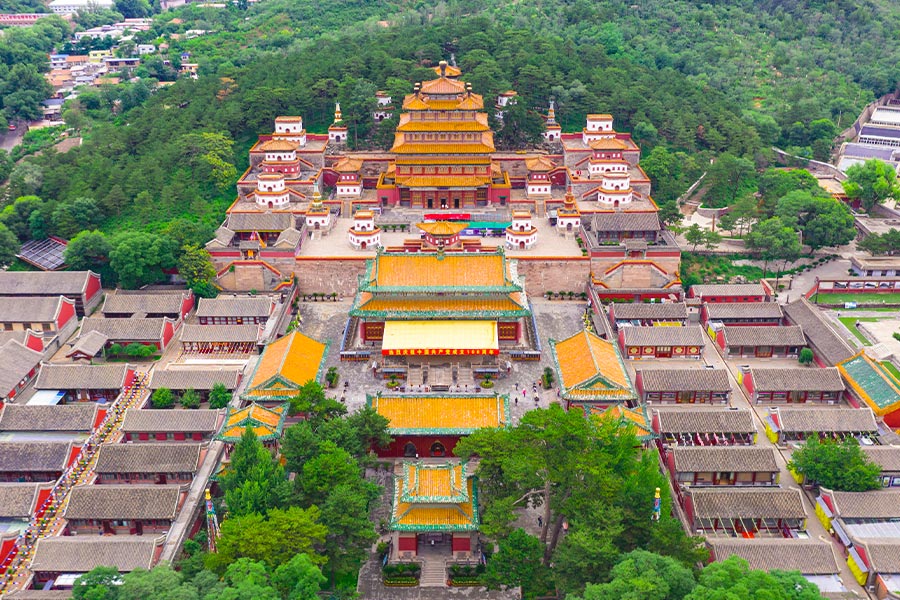
Puning Temple.
5. A Gateway to Chengde’s Rich History
Puning Temple is more than just a religious site; it is a historical landmark that encapsulates a pivotal moment in Chinese history. As you explore, take a moment to reflect on its origins and the role it played during the Qing dynasty. The temple’s historical significance enriches every visit, making it an essential stop for those interested in the broader narrative of China’s cultural heritage.
Tips for Your Visit
- Timing is Key: To fully appreciate the serene atmosphere, consider visiting early in the day when crowds are minimal.
- Respect Local Customs: Remember that photography is not allowed inside the main temple, so take a moment to appreciate the statue and architecture without distractions.
- Plan Your Route: Puning Temple is conveniently located near other significant attractions in Chengde, such as the Chengde Mountain Resort and Putuo Zongcheng Temple. Consider making it part of a larger itinerary to explore the rich tapestry of the area.

Puning Temple.
Puning Temple is a must-visit destination that combines spiritual depth with historical significance, making it a highlight of any journey through China. Whether you are a history buff, a spiritual seeker, or simply an admirer of breathtaking architecture, this temple promises an unforgettable experience.
Planning Your Visit: A Practical Guide
Planning Your Visit to Puning Temple
Nestled in the historical city of Chengde, Puning Temple (普宁寺), also known as the Temple of Universal Peace, offers a captivating glimpse into China’s rich Buddhist heritage. Built in 1755 during the reign of the Qianlong Emperor, this magnificent temple complex is renowned for its stunning architecture and the awe-inspiring 22-meter wooden statue of Guanyin, a revered bodhisattva. Here’s everything you need to know to make the most of your visit.
Getting There
Location:
Puning Temple is located at 2X82+4W4, Puning Rd, Shuangqiao District, Chengde, Hebei, China, 067050.
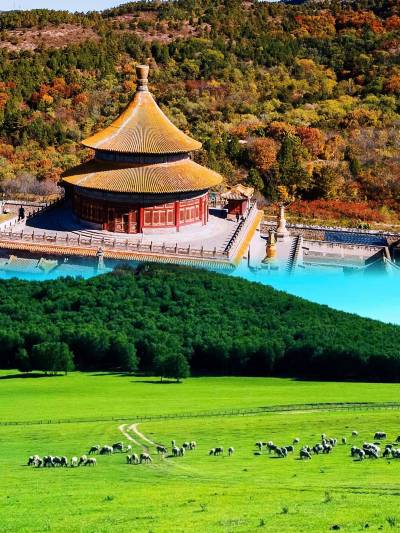
Puning Temple.
Transportation:
– By Public Transport: Buses frequently run from Chengde city center to Puning Temple. Check local schedules for the most convenient routes.
– By Taxi: Taxis are readily available in Chengde, and a ride to the temple should be both affordable and efficient.
Opening Hours
Puning Temple is open daily from 6:00 AM to 6:00 PM. To fully enjoy the temple’s serene atmosphere, it’s advisable to arrive early in the day.
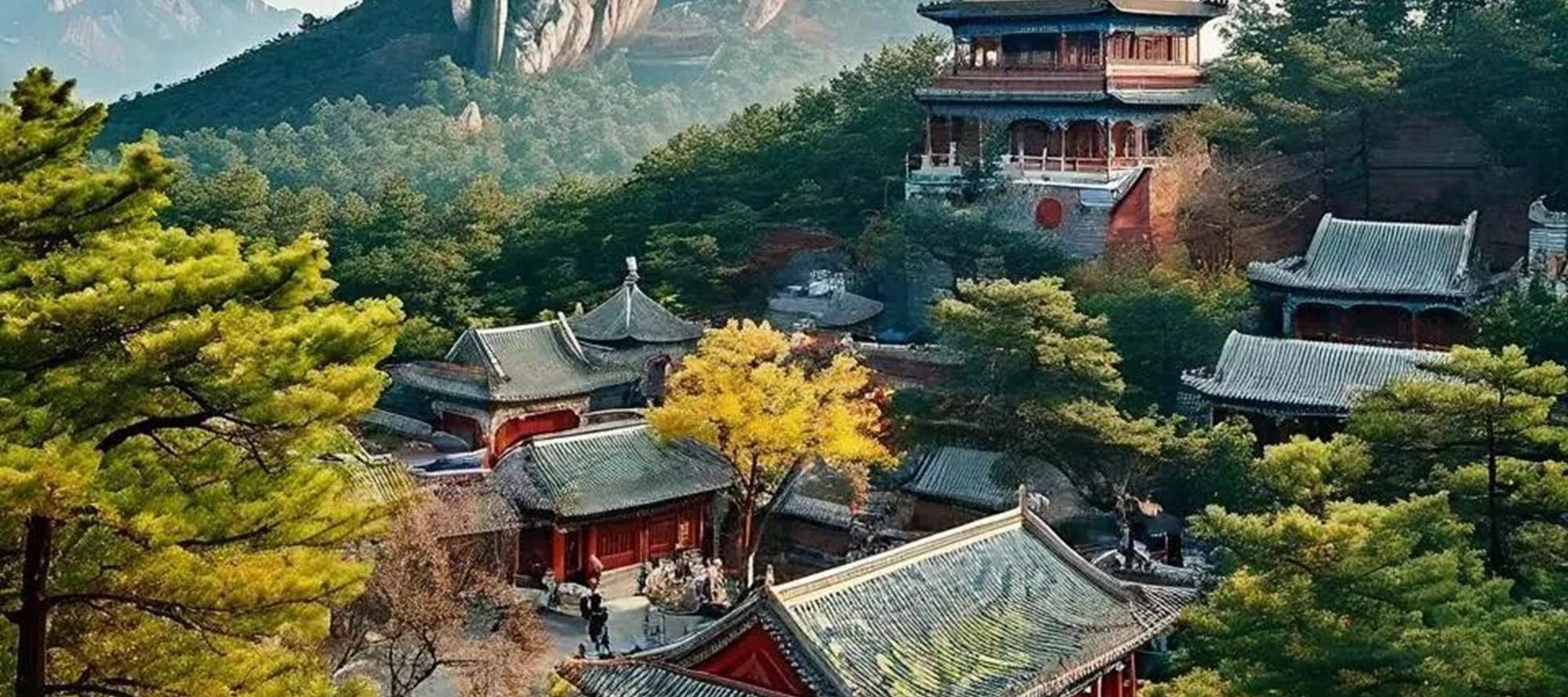
Puning Temple.
What to Expect
-
The Grand Guanyin Statue:
The temple is home to the world’s tallest wooden statue of Guanyin, adorned with intricate carvings representing her thousand arms and eyes. While photography inside the main hall is prohibited, visitors are encouraged to take in the grandeur of this masterpiece in person. -
Architectural Marvel:
Puning Temple beautifully blends Han Chinese and Tibetan architectural styles. As you explore the temple grounds, admire the vibrant red and white structures, and take in the unique details, including the whimsical “hobbit-like” doors that add a touch of charm. -
Spacious Grounds:
With expansive grounds, Puning Temple offers plenty of space for reflection and tranquility. Take time to stroll through the gardens, listen to the sounds of nature, and embrace the peaceful ambiance.
Tips for Your Visit
- Arrive Early: To avoid crowds and savor the peaceful environment, plan to visit in the morning, particularly on weekdays.
- Respect Local Customs: Photography is not allowed inside the main temple hall. Be mindful of local customs and practice discretion while exploring the sacred spaces.
- Time Your Visit: If possible, align your visit with local Buddhist festivals or events for a richer cultural experience. These occasions often feature unique rituals and ceremonies that can enhance your understanding of the temple’s significance.
- Dress Appropriately: As a religious site, modest attire is recommended. Ensure your clothing is respectful to the cultural and spiritual significance of the temple.
Nearby Attractions
While in Chengde, consider visiting these nearby sites to enrich your itinerary:
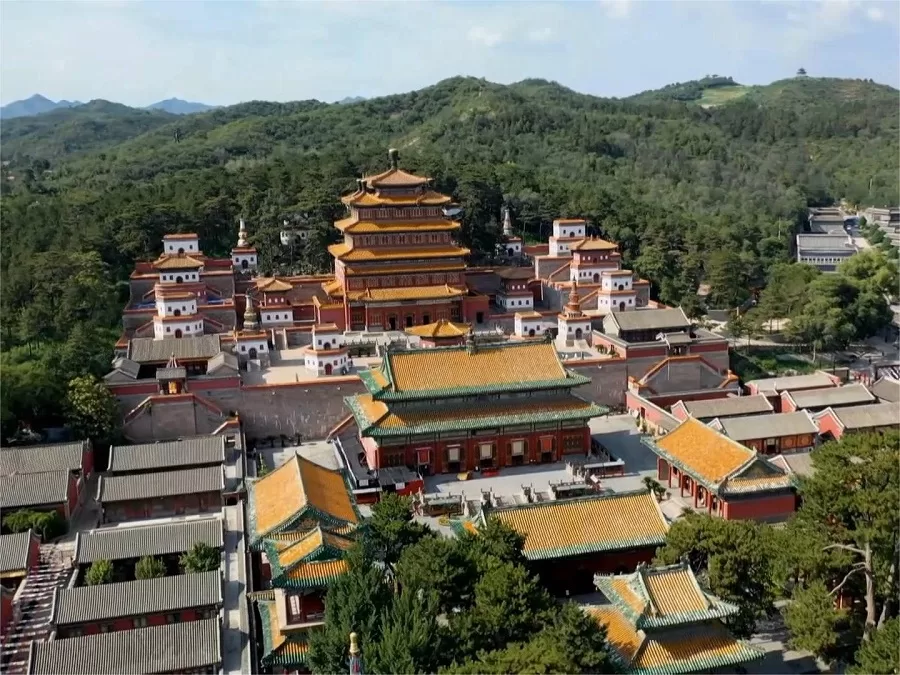
Puning Temple.
- Chengde Mountain Resort: A UNESCO World Heritage site, this former imperial retreat features beautiful gardens and palaces.
- Putuo Zongcheng Temple: Often compared to the Potala Palace in Lhasa, Tibet, this temple showcases stunning architecture and spiritual significance.
- Pule Temple: Another notable temple nearby, offering a serene atmosphere and unique architectural elements.
Final Thoughts
Puning Temple is more than just a historical site; it is a sanctuary of peace and reflection. With its breathtaking artistry and serene surroundings, a visit to this temple promises to be a memorable highlight of your journey through China. Embrace the tranquility, delve into the rich history, and let the spirit of Puning Temple leave a lasting impression on your travels.
Tickets: Prices, Booking, and Tips
Visiting Puning Temple (普宁寺), also known as the Temple of Universal Peace, is a captivating experience for those interested in Chinese history and culture. As you plan your visit to this remarkable Buddhist complex in Chengde, here’s everything you need to know about tickets, prices, booking, and some handy tips to enhance your experience.
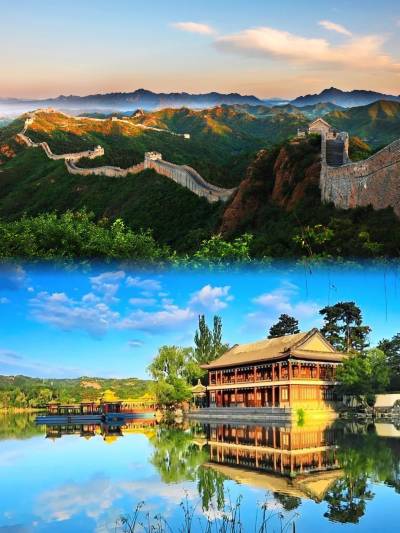
Puning Temple.
Ticket Information
-
Admission Price: The entrance fee for Puning Temple is typically around 30 CNY (approximately $4.50 USD). This fee grants you access to the temple grounds and allows you to marvel at the stunning architecture and the towering wooden Buddha statue.
-
Discounts: Reduced ticket prices may be available for students, seniors, and groups. Always carry identification to avail of these discounts.
Booking Your Visit
-
Advance Booking: While tickets can often be purchased on-site, it’s advisable to book in advance during peak tourist seasons (spring and autumn) to avoid long queues. Check local travel websites or apps for booking options.
-
Opening Hours: Puning Temple is open daily from 6:00 AM to 6:00 PM. Arriving early is advisable, especially if you prefer a quieter experience, as the temple can get busy later in the day.
Tips for Your Visit
-
Avoid Crowds: To fully appreciate the serenity of the temple, plan your visit early in the morning. This not only allows for fewer crowds but also offers a more peaceful atmosphere ideal for reflection.
-
Respect Photography Rules: Photography is not permitted inside the main hall where the Guanyin statue resides. Respecting this rule enhances the spiritual experience for you and other visitors.
-
Explore the Grounds: Take your time to wander through the expansive temple grounds. The blend of Han Chinese and Tibetan architectural styles is truly mesmerizing, and the intricacies of the smaller buildings deserve attention.
-
Plan Around Events: If possible, time your visit to coincide with special events or festivals held at the temple. These occasions provide a unique opportunity to witness local customs and traditions in action.
-
Accessibility: The temple is accessible by bus from various points in Chengde, making it convenient for travelers. However, be mindful of the bus schedules to avoid delays.
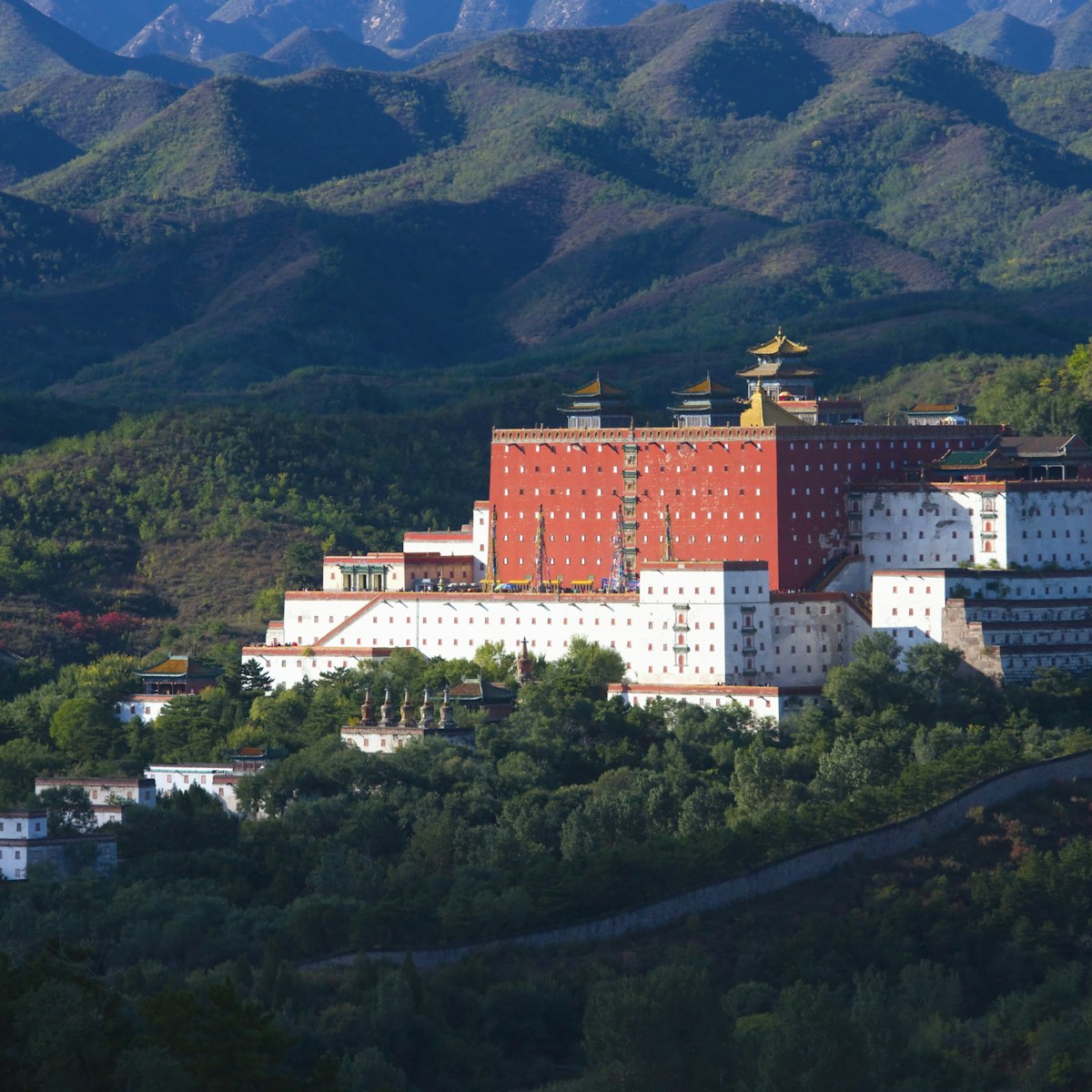
Puning Temple.
In Summary
A trip to Puning Temple is more than just a sightseeing excursion; it’s an immersion into the rich tapestry of Chinese Buddhism and culture. With its remarkable features and tranquil ambiance, this temple stands as a testament to China’s historical depth and artistic heritage. Remember to plan ahead, respect local customs, and enjoy your exploration of this sacred site.
How to Get There: A Complete Transportation Guide
Getting to Puning Temple: Your Comprehensive Transportation Guide
Visiting Puning Temple (普宁寺), also known as the Temple of Universal Peace, is an enriching experience that immerses you in the serene beauty and architectural grandeur of this significant Buddhist complex in Chengde, Hebei province. Here’s how to navigate your way to this cultural gem.
By Air
The nearest major airport to Chengde is Chengde Puning Airport (CED), which offers limited domestic flights. For international travelers, the most convenient option is to fly into Beijing Capital International Airport (PEK) or Beijing Daxing International Airport (PKX).
- From Beijing to Chengde:
-
Option 1: High-Speed Train
- Duration: Approximately 2-3 hours.
- Take a high-speed train from Beijing North Railway Station to Chengde Railway Station. Trains run frequently throughout the day, making this a comfortable and efficient option.
-
Option 2: Bus
- Duration: Approximately 4-5 hours.
- Buses depart from various locations in Beijing, including the Liujiayao Bus Station and Sanyuanqiao Bus Station. This option is generally less comfortable but more economical.
By Train
Chengde has a well-connected railway system, making it accessible from many nearby cities. If you’re traveling from cities like Shijiazhuang, Tianjin, or even Harbin, consider taking a train to Chengde Railway Station.
- Tips:
- It’s advisable to book your tickets in advance, especially during peak travel seasons.
- Check the official railway website or use apps like 12306 for current schedules and ticket availability.
Getting to Puning Temple from Chengde City Center
Once you arrive in Chengde, you have several options to reach Puning Temple, which is located just a few kilometers from the city center.
- By Public Bus:
- Various public buses connect the city center to Puning Temple. Look for buses with stops at major attractions, and disembark at the closest stop to the temple.
-
Bus routes may change, so it’s wise to confirm current routes with locals or at your accommodation.
-
By Taxi:
- Taxis are readily available in Chengde. A taxi ride from the city center to Puning Temple typically costs around 30-50 RMB (approximately $5-$8) and takes about 15-20 minutes, depending on traffic.
-
Consider using a ride-hailing app like Didi for convenience and ease of communication.
-
By Bicycle:
- For the adventurous traveler, renting a bicycle can be a delightful way to explore the scenic routes leading to the temple. Several bike rental shops can be found in the city.
Visiting Tips
-
Operating Hours: Puning Temple is open daily from 6:00 AM to 6:00 PM. Visiting early in the morning is recommended to avoid crowds and soak in the tranquil atmosphere.
-
Respect Local Customs: Photography is not allowed inside the main temple where the impressive Guanyin statue resides, so take a moment to appreciate the intricate details without the distraction of your camera.
-
Accessibility: The temple grounds are spacious and involve some walking, including steps leading to various sections. Wear comfortable shoes to enhance your experience.
-
Plan Your Visit: If possible, check for any special events or festivals that may be taking place during your visit for a more immersive cultural experience.
Puning Temple is not just a destination; it’s a journey into the heart of Chinese history and spirituality. With this guide, you’ll navigate your way effortlessly to one of Chengde’s most cherished landmarks. Safe travels!
Local Cuisine and Accommodation Nearby
When visiting the magnificent Puning Temple, also known as the Temple of Universal Peace, you’ll want to immerse yourself not only in its serene beauty but also in the local flavors and comfortable accommodations that Chengde has to offer.
Culinary Delights
Chengde is a culinary treasure trove, and exploring its local cuisine is a must for any traveler. Here are some recommended dishes and where to find them:
-
Chuan Bei (川贝): This traditional dish features tender chicken cooked with a mix of herbs, often enjoyed with rice. You can find this delicious offering at local restaurants like Chengde Food Street, where various vendors serve up delicious and affordable meals.
-
Mutton Hotpot (羊肉火锅): A favorite in northern China, mutton hotpot is both warming and communal. Try Qingcheng Hotpot, located close to the temple, where you can enjoy a bubbling pot of fresh mutton and vegetables while soaking in the local atmosphere.
-
Grilled Fish (烤鱼): For something different, indulge in grilled fish at Dadong Fish Restaurant, known for its flavorful marinades and perfect grilling techniques. It’s a great place to relax after a day of temple exploration.
-
Local Snacks: Don’t miss out on trying Chengde’s sesame cakes (芝麻饼) and fried dough twists (炸面圈), which you can find at street vendors near the temple. These snacks are perfect for a quick bite while you stroll through this historical area.
Places to Stay
After a day filled with awe and exploration, you’ll want a comfortable place to rest. Here are some accommodation options near Puning Temple:
-
Chengde Mountain Resort Hotel: This hotel seamlessly blends modern comfort with traditional Chinese architecture. Located just a short distance from the temple, it offers stunning views of the surrounding mountains and excellent amenities, making it an ideal base for your Chengde adventures.
-
Jinjiang Inn Chengde: A reliable option for budget travelers, Jinjiang Inn provides clean, comfortable rooms with modern conveniences. Its convenient location makes it easy to explore nearby attractions, including the Puning Temple.
-
Chengde Zhaowang Hotel: For those seeking a more luxurious experience, this hotel features elegant decor and a full range of services, including a spa and on-site dining options. Its proximity to the temple allows you to return after a day of sightseeing with ease.
-
Hostel Options: If you’re traveling on a budget or looking for a more social atmosphere, consider staying at Chengde International Youth Hostel. This lively hostel is a fantastic place to meet fellow travelers and share experiences while being within walking distance of Puning Temple.
Final Thoughts
Exploring the Puning Temple is just the beginning of your Chengde experience. By indulging in local cuisine and finding the right accommodation, you can create a truly immersive journey into the rich tapestry of Chinese history and culture. Enjoy your travels!
Frequently Asked Questions
Frequently Asked Questions about Puning Temple
1. What is Puning Temple, and why is it significant?
Puning Temple, also known as the Temple of Universal Peace, is a prominent Buddhist complex located in Chengde, Hebei Province. Built in 1755 during the reign of the Qianlong Emperor, it commemorates the emperor’s victory over the Zonggar people. The temple is distinguished by its stunning architecture, which combines Han Chinese and Tibetan elements, and houses the world’s tallest wooden Buddha statue, a massive 22-meter representation of Guanyin.
2. What are the main attractions within the temple?
Visitors to Puning Temple can marvel at:
– The 22-meter tall wooden statue of Guanyin, known for its intricate details and representation of the “thousand arms and thousand eyes.”
– The spacious temple grounds, which offer a serene atmosphere for reflection and exploration.
– Unique architectural features, including hobbit-like doors and vibrant red and white structures.
3. Are there any photography restrictions?
Yes, photography is not allowed inside the main temple where the Guanyin statue is located. Visitors are encouraged to respect these rules and soak in the experience without distractions.
4. When is the best time to visit Puning Temple?
To enjoy a more tranquil experience and avoid crowds, it is recommended to visit early in the day. Additionally, consider timing your visit during special events or festivals for an enhanced cultural experience.
5. How do I get to Puning Temple from Chengde?
Puning Temple is conveniently located near the Chengde Mountain Resort. Public transportation options, including buses, provide easy access to the temple grounds. Be sure to check local schedules for the most efficient routes.
6. What are the opening hours for Puning Temple?
Puning Temple is open daily from 6:00 AM to 6:00 PM. It’s advisable to arrive early to make the most of your visit.
7. Is there an entry fee to visit Puning Temple?
There is typically a small entry fee to visit the temple complex, which contributes to the maintenance and preservation of this historical site. Please check for current prices on arrival, as they may vary.
8. Can I explore the temple grounds on my own?
Absolutely! Puning Temple offers spacious grounds for visitors to explore independently. Take your time to appreciate the architecture, serenity, and the beautiful landscaping that surrounds this historic site.
Final Thoughts on Your Trip
As you conclude your journey through the breathtaking Puning Temple, take a moment to reflect on the rich tapestry of history, spirituality, and artistry that this remarkable site embodies. Nestled in the serene surroundings of Chengde, this temple not only stands as a testament to the grand architectural ambitions of the Qing Dynasty but also serves as a sanctuary for those seeking peace and introspection.
Why Puning Temple Matters
-
Historical Significance: Built in 1755, Puning Temple commemorates the Qing Emperor Qianlong’s military achievements while showcasing the harmonious blend of Han and Tibetan architectural styles. It’s a vivid reminder of China’s diverse cultural heritage.
-
Architectural Marvel: The temple is home to the world’s tallest wooden Buddha statue, standing over 20 meters high, alongside the mesmerizing 1000-arm Guanyin statue. These masterpieces invite admiration and contemplation, making them unforgettable highlights of your visit.
-
A Peaceful Retreat: Amidst the bustling city of Chengde, the tranquil grounds of Puning Temple offer a space for quiet reflection and spiritual rejuvenation. The lush surroundings and serene atmosphere provide a perfect escape from the frenetic pace of modern life.
Tips for Your Visit
- Timing is Key: Plan your visit early in the day to avoid crowds and to fully appreciate the temple’s serene environment.
- Respect Local Customs: Photography is not permitted inside the main temple, allowing visitors to engage more deeply with the spiritual ambiance of the space. Embrace the moment and let the grandeur resonate within you.
- Experience Cultural Events: If possible, time your visit to coincide with local festivals or events, adding a vibrant cultural dimension to your experience.
As you leave Puning Temple, carry with you not just the memories of its awe-inspiring statues and beautiful architecture, but also a sense of tranquility and connection to the enduring traditions of Chinese Buddhism. Whether you are an enthusiast of history, architecture, or spirituality, Puning Temple offers a profound encounter that lingers long after you’ve departed. Safe travels, and may your journey continue to be filled with discovery and inspiration!